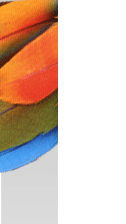The Exhibit
A message from Dr. Clark Erickson
Associate Curator, American Section, Penn Museum
www.sas.upenn.edu/~cerickso/

|
|
In contrast to art produced by artists in Western Society, the material culture of native peoples is often relegated to the categories of “crafts,” “primitive art,” and “indigenous art.” Seldom is the producer named, the context of creation and use specified, or the meaning of the object presented. The complex art styles of Amazonian peoples, in a multitude of media, often rooted in thousands of years of tradition, largely have been ignored.
The exhibition Vanishing Worlds: Art and Ritual of Amazonia presents many examples of the diverse styles of Native Amazonian expression in a variety of media and materials. |
| Vanishing Worlds exhibit crew, from left to right: Bill Whiting, Katherine Blanchard, Aaron Billheimer, Clark Erickson, Kevin Lamp, and John Kuehne. Photo by Lauren Hansen-Flaschen. |
|
Although the objects were collected piecemeal from many different groups over a long period of time, the exhibition and catalog attempt to place the artwork in context of use and indigenous meaning. Most of Amazonian art is portable and intended to decorate, enhance, and empower the human body. In other examples, art represents nature, totemic animals, deities, myths, and culture heroes.
Visitors will experience the brilliant luminescence of headdresses, masks, and ornaments decorated with tropical bird feathers, decorated delicate pottery used for serving food and drink during festivals and rituals, fiber and wood dance costumes, and fine cotton textile tunics. Some of the decorated costumes and ornaments were worn by shamans during curing rituals, chiefs displaying power and authority, initiates participating in rituals into adulthood, and hosts and guests of community feasts.
The vast Amazonian region is home to many the world’s indigenous peoples organized in over three hundred groups with distinct cultural traditions, artistic styles, and languages. Vanishing Worlds: Art and Ritual of Amazonia presents art and other material culture of the Kayapó, Ticuna, Shuar, Shipibo-Conibo, Ka’apor, Tapirapé, Karajá, Mayna, groups of the Upper Xingu River, and other Amazonian peoples. Unfortunately, as is the case everywhere, indigenous peoples are impacted by disease, exploitation, large scale destruction of their natural environment, and rapid deculturation that began with the moment of contact with the outside world and continues with the pressures of globalism. Despite these challenges and the extinction of many groups, most of the peoples represented in the exhibit are actively revitalizing their culture, language, and art; gaining control over land; developing sustainable sources of income through eco- and cultural tourism; conserving, managing, and sustainably harvesting natural resources; achieving civil rights and political representation; and determining their own futures.
|













